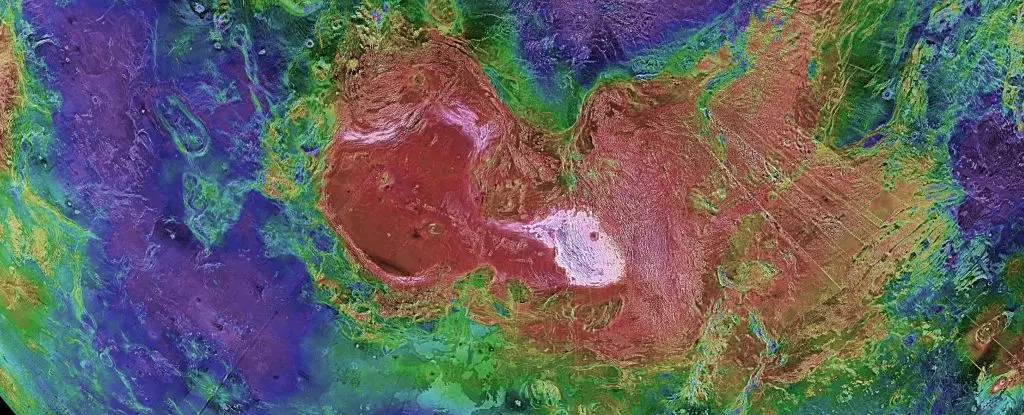The planets Venus and Earth, often considered sister planets, have taken divergent paths in terms of their evolution and characteristics. Earth boasts a rich and diverse environment with moderate temperatures, vibrant oceans, and flourishing vegetation, while Venus is plagued by a hostile atmosphere, corrosive rains, extreme temperatures, and crushing pressure. Beyond just surface appearances, the two planets differ significantly in their geological makeup, with Venus lacking tectonics, which are crucial for stabilizing Earth’s climate and land masses.
Recent research has shed new light on Venus’ geological history, challenging previous assumptions about the planet’s formation. Scientists have uncovered intriguing similarities between Venus’ tesserae structures and Earth’s ancient continental crust, indicating that both planets may have experienced comparable geological processes billions of years ago. This unexpected connection has sparked a reevaluation of our understanding of planetary evolution and the factors that shape habitability on rocky worlds like Earth.
Earth’s crust is a complex mosaic of tectonic plates that interact, subduct, and rearrange over time, giving rise to diverse landscapes and geological features. The oldest regions of Earth’s continental crust, known as cratons, play a fundamental role in shaping the planet’s surface and providing a foundation for the growth of continents. These ancient rock formations offer valuable insights into the early stages of Earth’s development and the mechanisms that drive planetary evolution.
Despite its inhospitable conditions, Venus has not escaped scientific scrutiny, thanks to NASA’s Magellan spacecraft, which mapped the planet’s surface with radar technology in the 1990s. By analyzing data from this mission, researchers have uncovered surprising similarities between Venus’ tesserae regions, particularly the Ishtar Terra plateau, and Earth’s cratons. This discovery has raised intriguing questions about the parallel evolution of Earth and Venus and the shared geological processes that may have shaped their early landscapes.
Implications for Habitability
The revelation that Venus’ tesserae structures bear a striking resemblance to Earth’s cratons offers valuable insights into the past dynamics of both planets and the potential factors that influence habitability. By pinpointing the timing of key geological events in the planetary histories of Venus and Earth, scientists can gain a deeper understanding of how habitable conditions arise and persist on rocky worlds. This comparative approach may unlock the mysteries of Earth’s early history and shed light on the complex interplay between geological processes and planetary habitability.
The study of Venus’ geological features and their parallels to Earth’s continental crust opens up new avenues for exploring the shared history of these two planets and understanding the universal processes that shape rocky worlds in our solar system. By delving into the geological mysteries of Venus and Earth, scientists are uncovering a wealth of information that could revolutionize our understanding of planetary evolution and the conditions that enable life to thrive on Earth and potentially elsewhere in the cosmos.


Leave a Reply